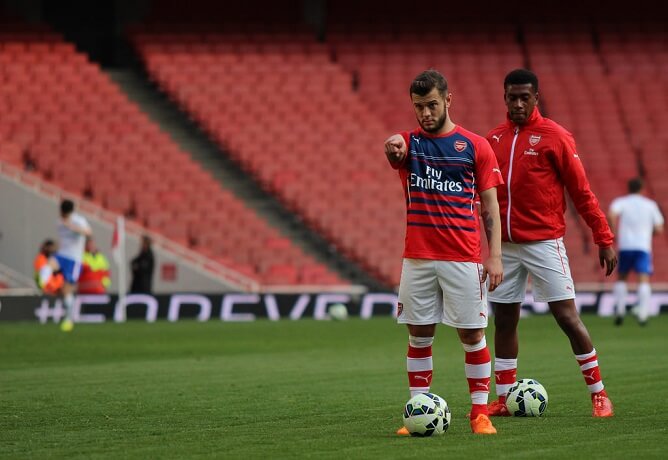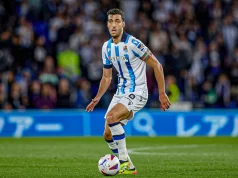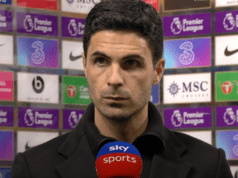Roy Hodgson’s England huffed and puffed till the round of 16 at Euro 2016 but a fighting Iceland emerged 2-1 victory at the Allianz Riviera Stadium against a much higher-ranked side, causing one of the upsets of the tournament so far. An early penalty converted by skipper Wayne Rooney was soon overturned by Ragnar Sigurdsson and Kolbeinn Sigthorsson scored in 20 minutes and that was that.
Involved in the action in Nice as a half-time substitute was Arsenal’s No.10, Jack Wilshere. Wilshere came on for Eric Dier to play in a midfield three with Dele Alli and Rooney as Iceland were content to defend their lead. However, in a generally drab team display, his only noticeable contribution was a cute scoop into the box over the defenders which Harry Kane ran onto but headed straight into the hands of the goalkeeper.
Wilshere’s career elicits déjà vu of many young talents who have struggled to slay the beast of injuries. The 24-year-old last played the full 90 minutes for Arsenal in a 2-1 win over Southampton in the Capital One Cup almost two years ago in the September of 2014.
Arsene Wenger promoted the midfielder to the first team in 2008 after his goal-scoring heroics from midfield for the youth teams. Wilshere, who was not even 17 years old, became the youngest player to play for the Gunners breaking a record previously held by Cesc Fabregas.
A loan spell at the Reebok Stadium in 2009-10 gave him much-needed first-team minutes and he impressed in midfield scoring his first Premier League goal while Bolton Wanderers finished 14th. He returned to Arsenal the next season and made 35 appearances in the league in 2010-11 as he was voted the league’s Young Player of the Year by his peers and Arsenal’s Player of the Year besides featuring in the Professional Footballers Association (PFA) Team of the Year.
Wilshere’s injury troubles started haunting him from 2011 and he’s never played in more than 25 league games a season for Arsenal since then. However, he did manage to score the goal that was voted the Goal of the Season when he finished off a great passing move in Arsenal’s 4-1 against Norwich in 2014. The quality that Wilshere offers when he is fully fit is undeniable and his return to full fitness following injuries to his foot, ankle and fibula over the last three seasons has been long awaited.
Wilshere’s strengths are his short passing, assured touch and awareness in attack. This makes him ideal to play as an attacking spearhead of a three-man midfield, when you factor in his wicked left foot shots. His tackling is decent at best and a red-card threat at worst, his defensive positioning is suspect and he provides negligible aerial support for his centre-backs. Starting deeper just means he takes more time to join in attack and the chance is usually lost against teams defending compactly.
Yet England and Arsenal have consistently deployed him as one of the two holding midfielders tasked with breaking up play, where he is more often stranded upfield against quick counterattacks. Dier, on the other hand, is a centre-back who has been deployed as an anchor in midfield to good effect because his physical presence, man-marking and tackling are much better than most midfielders despite his range of passing being fairly limited.
Wilshere needs to play in the position that his jersey indicates: as a No.10. However, with the league-leader in assists, Mesut Ozil, and new signing Granit Xhaka already available for Arsenal and the new teenage sensation Dele Alli upstaging him in terms of fitness and match-time for The Three Lions, it would be incredibly difficult for Wilshere to get a starting spot. None of this is important, of course, unless he manages to stay fit.





